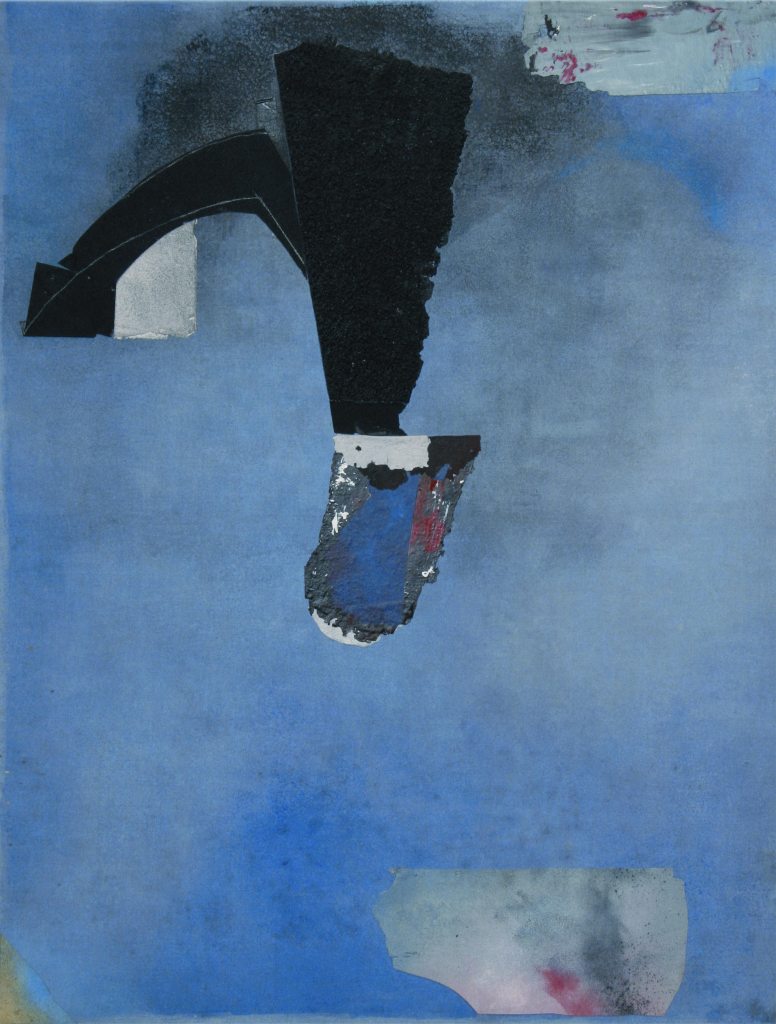GIUSEPPE SANTOMASO
Nasce a Venezia (1907-Venezia 1990) da un orafo che pensa di avviarlo al suo stesso mestiere ma già da subito lui propende per la pittura; inizia la sua formazione alla “Fondazione Bevilacqua La Masa”, per continuarla all’Accademia di Belle Arti a Venezia. Il suo stile è naturalistico e figurativo; come molti giovani artisti, egli partecipa con l’opera Figura,alla biennale XIX di Venezia del 1934. Molto presto sente l’ambiente veneziano stretto e provinciale, comincia il confronto con l’arte dell’avanguardia, nel 1937 si sposta in Olanda per lo studio degli impressionisti e dei Fauves. Le sue opere sono impressionate dall’uso del colore di Vangogh fino agli ultimi lavori. La sua prima personale avviene nel 1939 a Parigi.Nel 1946 aderisce al gruppo degli artisti “Maitres-a’-penser” e durante la prima mostra a Milano, lo si vede protagonista.Tra il 1950 e il 1988, partecipa in modo quasi continuativo alla Biennale, in questi anni passa da un movimento all’altro, dal cubismo al surrealismo, all’astrattismo nervoso ed è in questi anni che intensifica la produzione grafica. Tra il ’54 ed il ’57 riceve molti premi.Nella seconda metà degli anni ’50 si accosta quasi completamente all’astrattismo informale che caratterizza il suo lavoro.Negli anni ’70 le sue opere sono ormai luminose ed i legami con l’informale sono ormai superati.
 ARATRO E FALCIATRICI
ARATRO E FALCIATRICI
1952 - olio su tela, cm 129.5x75
Con questo dipinto, l’autore sfuggendo alla polemica tra astrattisti e realisti militanti, approda a ciò che è stato definito “astratto concreto”. Qui l’aratro e le falciatrici, pur ravvisabili, diventano solo un pretesto per il dispiegarsi di una pittura che ha i suoi fondamenti nel dialogo tra i colori bruniti ed un fondo giallo con varie intensità.
Scheda Catalogo
 QUASI ALLEGRO
QUASI ALLEGRO
1987 - polimaterico su tela, cm 116x80
In questo dipinto, l’artista riesce a coniugare la libertà di dipingere con la purezza della pittura. Sono utilizzati più materiali e tecniche quali collage e pietra lavica e c’è un ricordo dei muri veneziani. Un’armonia tra controllo razionale ed emotività.
Scheda Catalogo
 Giuseppe Santomaso was born in Venice (1907-Vence 1990).by a goldsmith who thinks to start him to his own job, but already now he is inclined to painting, he began his training at the “Foundation Bevilacqua La Masa” and then continues it at the Academy of Fine Arts in Venice. His style is naturalistic and figurative as many young artists; at the Biennale XIX of Venice of 1934 he partecipates with the work “Figura”. Very soon he feels the Venetian environment narrow and provincial, he begins the comparison with the avant-garde art; in 1937 he moves to Holland for the study of the Impressionists and the Fauves. His works are impressed by the use of the Vangogh’s colour to his last works. His first solo show takes place in 1939 in Paris. In 1946 he joined the group of anti-fascists artists “Maitres-à-penser” and during the first exhibition in Milan, he is the protagonist. Between 1950 and 1988 he took part in an almost continuous at the biennal; in these years he went from one movement to another, from cubism to surrealism and to abstractionism and it’s in those years that he intensifies the graphic production. Between 1954 and 1957 he receives many awardas. In the second part of the fifties he approaches almost completely informal abstractionism that characterizes his work. In the seventies his works are now bright and the ties with the informal have become outdated.
Giuseppe Santomaso was born in Venice (1907-Vence 1990).by a goldsmith who thinks to start him to his own job, but already now he is inclined to painting, he began his training at the “Foundation Bevilacqua La Masa” and then continues it at the Academy of Fine Arts in Venice. His style is naturalistic and figurative as many young artists; at the Biennale XIX of Venice of 1934 he partecipates with the work “Figura”. Very soon he feels the Venetian environment narrow and provincial, he begins the comparison with the avant-garde art; in 1937 he moves to Holland for the study of the Impressionists and the Fauves. His works are impressed by the use of the Vangogh’s colour to his last works. His first solo show takes place in 1939 in Paris. In 1946 he joined the group of anti-fascists artists “Maitres-à-penser” and during the first exhibition in Milan, he is the protagonist. Between 1950 and 1988 he took part in an almost continuous at the biennal; in these years he went from one movement to another, from cubism to surrealism and to abstractionism and it’s in those years that he intensifies the graphic production. Between 1954 and 1957 he receives many awardas. In the second part of the fifties he approaches almost completely informal abstractionism that characterizes his work. In the seventies his works are now bright and the ties with the informal have become outdated.
PLOW AND LAWN MOWERS - 1952 - It’s an multimateric on canvas - With this painting, the author escaping the controversy between realists and abstract artists, comes to what has been called “Concrete abstract”. Here the plow and lawn mowers, while discernible, become a pretext for the unfolding of a painting that has its foundation in the dialogue between the burnished colors and a yellow background with various intensities.
ALMOST CHEERFUL - 1987 - It’s an oil on canvas - It’s a multi-material on canvas - In this painting, the artist manages to combine the freedom of painting with the purity of painting. There is an use of more materials and techniques such as collage and the lava stone and there is a reminder of the Venetian walls. Harmony between rational control and emotivity.